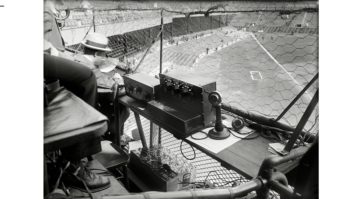AMSTERDAM —WorldDAB’s IBC session “Looking to radio’s digital future — digital switchover progress and plans” offered testimonials from various countries transitioning to DAB digital radio about the current market situation and progress.

Patrick Hannon, president of WorldDAB, introduced the discussion showing highlights from the recently published WorldDAB second quarter 2016 report. Nearly 50 million (48,232,000) consumer and automated receivers were sold across featured markets.
LIKE A PRISON
As an average across markets, DAB/DAB+ offers listeners five times the number of national stations they can get on FM/AM, while coverage in Norway and Switzerland is at 99.5 percent. Household digital-listening penetration in Norway reached 67 percent, with the United Kingdom following behind at 56 percent. Fifty-three percent of radio listening in Switzerland is now via a digital platform. “Digital radio continues to go from strength to strength with all markets making significant progress in the last six months,” Hannon remarked.
Graham Dixon, head of Radio at the European Broadcasting Union, confirmed the endorsement of his organization concerning digital radio. In his opinion, the analog FM “radio market is like a prison, it may look beautiful but it is considerably limiting.”
Dixon then unveiled an EBU market study conducted in Germany, France, U.K., Italy and Spain. The study shows how migrating the average radio listening time (2 hours 43 minutes per day as of Q2/2015) to mobile radio streaming would force a listener to spend more than €25 (US$28) per month according to the current data plan rates in all of the considered countries, with the exception of France.
The EBU also tested the power consumption of DAB+ reception and Spotify music streaming in the new LG Stylus 2 smartphone. DAB+ reception requires 304 mW, while Spotify 736 mW, confirming the supposed longer battery runtime allowed by DAB radio.
RADIO DEMOCRATIZATION
Norway will be the first country to switch over from FM to DAB+; the transition is scheduled to start in January 2017. In his speech Jørn Jensen, Norwegian public service broadcaster NRK senior advisor, told the audience about the expected roadmap of the migration process, both from the point of view of deploying the new transmission equipment and of the communication campaign launched to assist consumers along the path, raising their digital awareness.
“Thanks to DAB+, the number of national channels has increased from five to 25,” he said “with people living in remote and rural areas now able to get the same content offering that was previously only available in major cities. I would like to call this ‘radio democratization.’”
The speaker panel included also Carsten Zorger, director of Digitalradio Büro Deutschland; Laurence Harrison, director of Technology and Market Development at Digital Radio UK; Thomas Saner, Senior Advisor for SRG SSR; and Jurre Bosman, ad interim director of Radio Programming of the Dutch public service broadcaster NPO. They gave a helicopter-view on digital radio market in their respective countries.
Paul Sylvester, content director of U.K.-based Absolute Radio highlighted the success story of his station. Absolute Radio operates several subsidiary digital-only stations, each focusing on rock music from a specific decade, such as Absolute Radio 60s, 70s, 80s, 90s, 00s and the iconic Classic Rock.
“We started in 2009 and had zero listeners. Now, in 2016, we have 1.6 million listeners,” Sylvester said. “Today we are the top-ranked digital-only station in the U.K. Being a digital-only brand was the key to our success, because it allowed us to easily create new ‘decadic’ stations each time we saw the opportunity.”
Davide Moro reports on the industry for Radio World from Bergamo, Italy.












